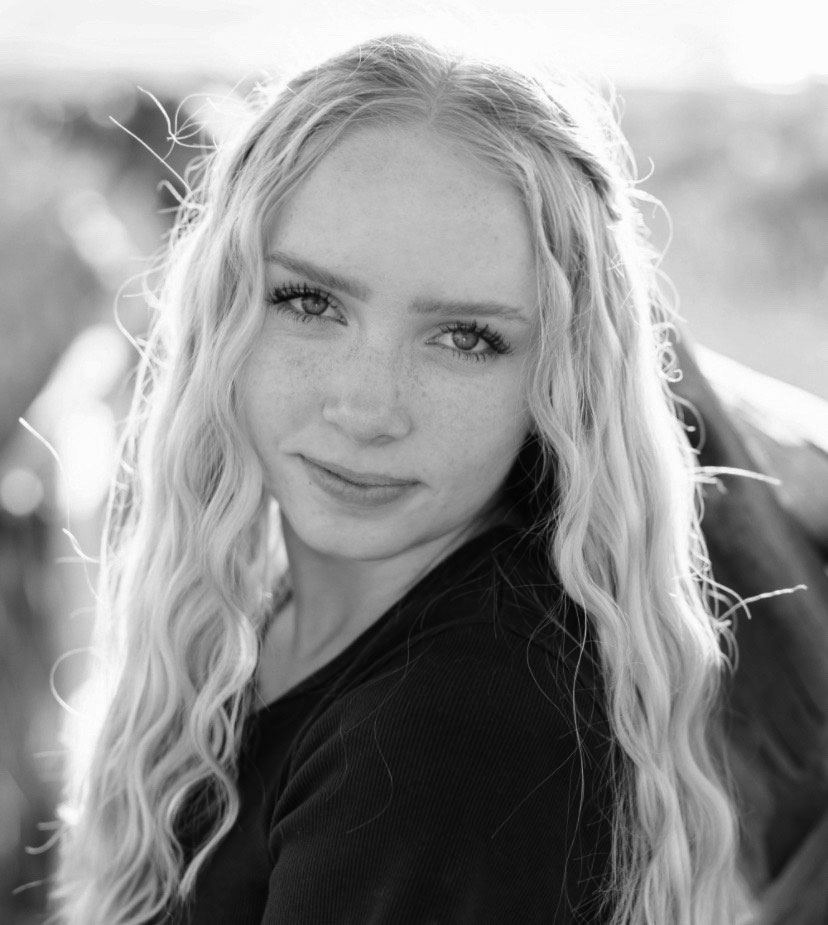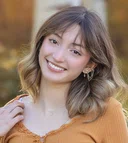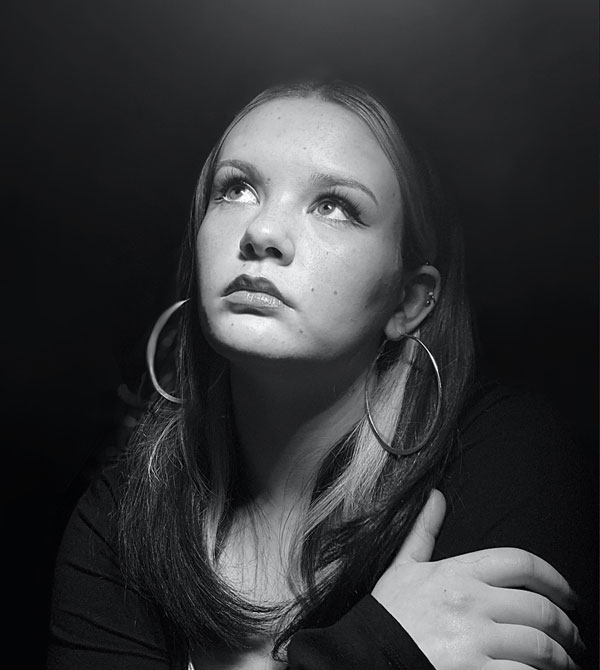

AP 3-D
Audrey Nordfelt
Hunter High School|West Valley City, Utah


Dimensions: 22” x 21” x 16”|Materials: Cone 10 clay, high fire glazes layered for custom effect, K9 & Las Vegas Red|Process(es): Sculpted hollow form, added hollow tentacles, factoring in balance, fired in reduction, added base|Curatorial Note: Very impressed with the large scale of many of this student's pieces. We find this form beautiful, and the glazes enhance the work. This is also technically very difficult to build.
Student statement
Student statement
Sustained Investigation| 22” x 21” x 16”|Materials: Cone 10 clay, high fire glazes layed for custom effect, K9 & Las vegas Red|Process(es): Sculpted hollow form, added hollow tentacles, factoring in balance, fired in reduction, added base.
My sustained inquiry was perception. I got the idea to investigate perception while working on this sculpture. While in class, I imagined this sculpture and decided it would be a fun project. As I worked on "Currents," it morphed into something different from what I originally pictured.
I built this sculpture mostly at home. A few times, my brothers would walk in and ask me what I was making, and I would always respond with, “I’m not sure.” This sculpture was an image in my head; it wasn’t anything specific or anything that already existed. It is an abstract 3-D form that I envisioned as I built it.
After my brothers asked what I was making, they would tell me what It looked like to them. One of my brothers said it looked like an anemone, and the other said it looked like an octopus. This made me think about perception and how everyone’s brains work and think differently.
When I brought my sculpture to school after I built most of it, I got the same comments from my family. So many people would ask what I was making, and then they would tell me what they thought it was. For the most part, people saw it as different things. This made me curious about perception again.
I decided to look into it and research human brains and how we process things we see. I learned that there are different steps to perception. One of the steps is “organization,” which means using existing knowledge to interpret what is being seen, felt, heard, or touched. This shows that because we all have learned different things and lived different lives, we all have different knowledge and use that knowledge to perceive things we see differently.
This helped me to understand why everyone sees my sculptures as different things. I thought perception was fascinating and used it as my sustained investigation. I continued to create large abstract sculptures to see how they would be perceived. I never would’ve looked into perception and never would have built many of my sculptures if it weren’t for the process of making this piece, "Currents."
I liked the idea of having a drawing and changing it into a sculpture. If another artist tried this with the same drawing, they would've ended up with something very different, which relates to perception.
Teacher statement
Teacher statement
Rock Frampton
The AP Art and Design course supports inquiry-based personalized learning in the sustained investigation portfolio component. What strategies helped you guide students through inquiry?
There are two things that I believe have been helpful in developing a successful AP Art and Design program at my high school. The first is developing genuine relationships with my students, meeting with each of them one-on-one so they feel comfortable talking with me freely and openly. Once students feel they can trust me, we begin to discuss the idea of “inquiry.” We work through their thought processes. These young art students have fantastic ideas, and I feel my role is more of a guide who helps them push their thinking by asking them “WHY?” Why are their guiding questions important to them? What are they trying to say and how can they allow further exploration?
How did you scaffold writing into the artmaking and thinking processes?
We start writing and drawing in our sketchbooks from the beginning of the semester. I tell students not to worry right away about concepts looking or sounding polished but to get their thoughts down on paper. These become the building blocks we use in forming their inquiry statements. At midterm and end of quarter, I meet with each student and look through their sketchbook with them. Together, we discuss their ideas, and I encourage them to continue developing existing ideas and considering new questions related to their portfolio.
How did you support skill development AND inquiry in the AP Art and Design curriculum?
As students start to form their inquiries, I introduce elements and principles of design along with new construction techniques. I encourage them to consider how or if the concepts we are learning about could be helpful to their sustained investigation. I aim to give my students a “toolbox” of design principles and technical skills they can use as they develop their portfolios. We always approach new techniques not as a requirement but as another ‘tool’ that can help them better express the ideas they are developing.
How did you structure practice, experimentation, and revision into your AP Art and Design curriculum?
I strive to help my students lose their fear of failure. Failure can be an excellent teacher. Fortunately, we have the equipment and storage to make our clay, which keeps our costs low and allows students to use lots of material for practice or large-scale work. When a student hesitantly asks if they should try a new technique or idea, I always say Yes! When students lose their fear of failure, they become at ease with practicing, trying new things, making adjustments, and trying again. Many of my students’ best artworks are created only after multiple attempts.
What creative programming (i.e., exhibit spaces, mentoring programs, curricular supports) have you implemented to support AP Art and Design students?
At our school, we have a large art department. We have beginning, intermediate, advanced, and AP-level courses. Something very effective for the AP Art and Design programs has been having an “advanced studio” art class comprising different sections of students. I can have “Advanced Ceramics” and the “AP 3D Design” sections during the same period. The advanced ceramic students are working on specific assignments, while the ‘AP 3D Design’ students are developing their portfolios. This allows the less experienced students to watch how the AP students work, develop their concepts, and assemble a portfolio. The following year, those students enter the AP 3-D Art and Design class with a sense of familiarity with the process, having seen and worked with the students who submitted portfolios the year before.
What did you learn from working with your student?
I feel lucky to have had the chance to work with Audrey. She taught me the importance of helping students push through uncertainty. She was our school's sterling scholar for dance and naturally very creative, but traditional visual arts, especially ceramics, were outside her comfort zone. She took my class as a junior, and I quickly learned of her natural ability as a sculptor in beginning ceramics. I encouraged her to take AP Art and Design as a senior. She was surprised but excited. Over the summer, she began questioning her choice and emailed me to let me know she wanted to drop the class because she was unsure of her abilities. She didn’t think she was capable of creating a strong portfolio. I encouraged her to stay in the class and promised she would do fine. How thankful I am that she stayed. Sometimes, students must be encouraged to keep going even when they don’t know how it will happen. She went on to win the best of show in our district art competition and created an amazing AP Art and Design art portfolio.
What is your advice to other AP Art and Design teachers?
Be open to who fits the mold of an “AP Art and Design student.” About half of my AP Art and Design group are students I approached and asked to consider creating a portfolio. Many of them were very surprised when I told them I thought they would be capable of creating a portfolio. Most students underestimate their abilities and are nervous about “not being good enough.” With support, guidance, and steady effort, I have seen incredible portfolios created and impressive growth achieved by students who potentially could have slipped by.
Audrey Nordfelt





